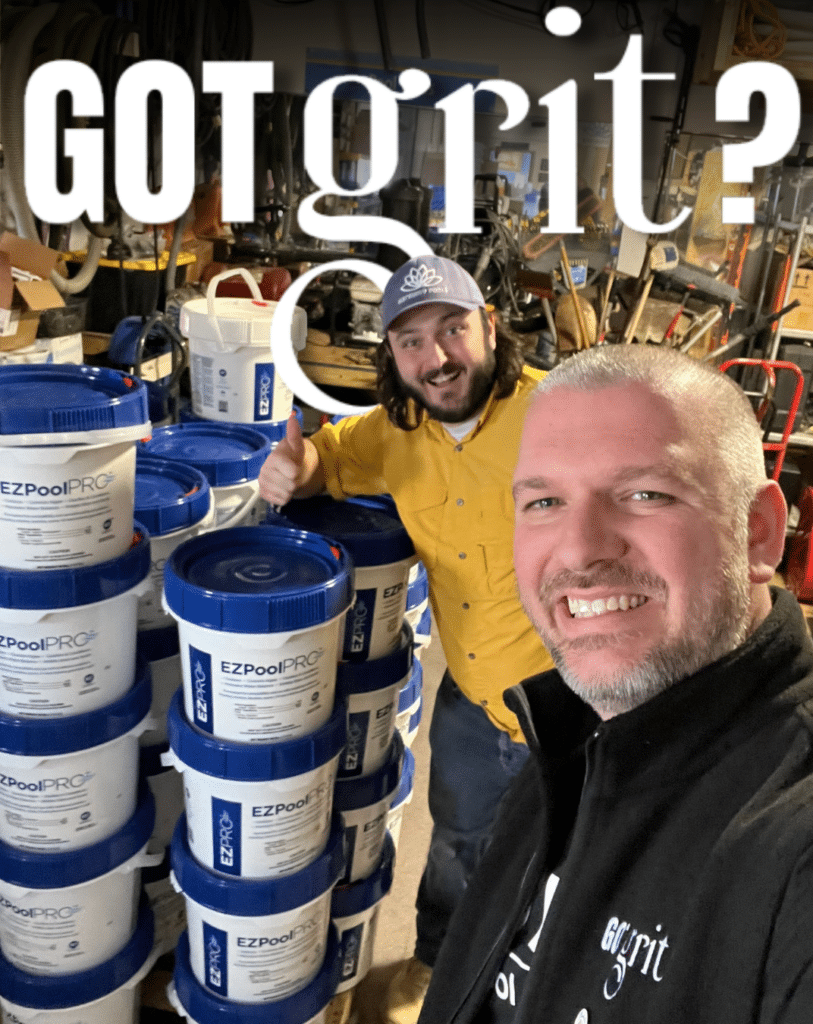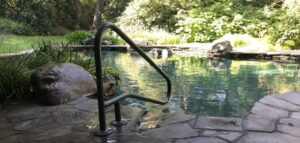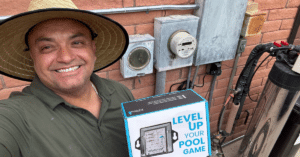Rumors have been swirling in the pool and spa industry about sodium bromide, a chemical widely used to combat algae, particularly in Florida’s warm climate. And oddly enough, there’s not a lot out there on the topic. Some say it’s banned, others are unsure about its safety. As a resource for pool professionals, this article will break it all down in plain language.
The U.S. Environmental Protection Agency (EPA) has not banned sodium bromide but has placed strict rules on its use, especially in outdoor pools and certain sanitization systems (salt, ozone, UV, MVP). These restrictions stem from concerns about a chemical called bromate, which might pose health risks. This article explains:
- What sodium bromide is and why people use it
- Why the EPA made the rules and what they are
- The science behind the concerns
- Why this is a big deal especially for high temperature environments life Florida
- Safe but just as strong alternatives for anyone looking for them
Our goal is to help pool professionals make informed decisions about keeping pools safe and clean for all swimmers.
What Is Sodium Bromide and Why Do People Use It?
Sodium bromide is a chemical you can add to pool water to fix tough problems, like yellow algae (also called mustard algae).
Algae are tiny living things, kind of like plants, that can grow in pool water. Yellow algae is a slimy, yellowish version that shows up in pools, especially in warm, sunny places. It sticks to the walls and makes the water look cloudy or dirty. It’s hard to get rid of with just regular pool cleaners.

When you mix sodium bromide with chlorine, together, they make a strong team that wipes out yellow algae. This has made sodium bromide popular with swimming pool service professionals, especially in warm, sunny areas where algae likes to grow happily.
But we have some newer rules around sodium bromide specifically for outdoor pool use.
Who Is the US EPA and What Are the Rules?
The U.S. Environmental Protection Agency (EPA) is a government agency responsible for protecting human health and the environment. It regulates chemicals, including those used in pools, under the Federal Insecticide, Fungicide, and Rodenticide Act (FIFRA), which covers products that kill organisms like algae. Because sodium bromide is an algaecide, it falls under EPA oversight and they create rules aimed at ensuring people stay healthy.
In 2021, the EPA issued an interim decision requiring sodium bromide products to carry a label stating: “Not for use in outdoor pools.” Which let’s be honest… covers a lot. But this rule also prohibits its use with certain pool systems, including:
- No Salt pools (which use a process called electrolysis to turn salt into chlorine).
- No Ozone systems (which use a gas to kill germs).
- No UV systems (which use ultraviolet light to help sanitize water).
- No Monopersulfate Non-chlorine shock (also called MPS, a chemical used to clean water without chlorine).
Hot Tubs Are Different: You can use it in outdoor hot tubs, but only if they’re covered when no one’s using them. (Get your Ultralift Covers now, folks)
IMPORTANT point that is being left out of many conversations. This isn’t just a suggestion—sodium bromide products are labeled with a federal warning: “It is a violation of Federal Law to use this product in a manner inconsistent with its labeling.”
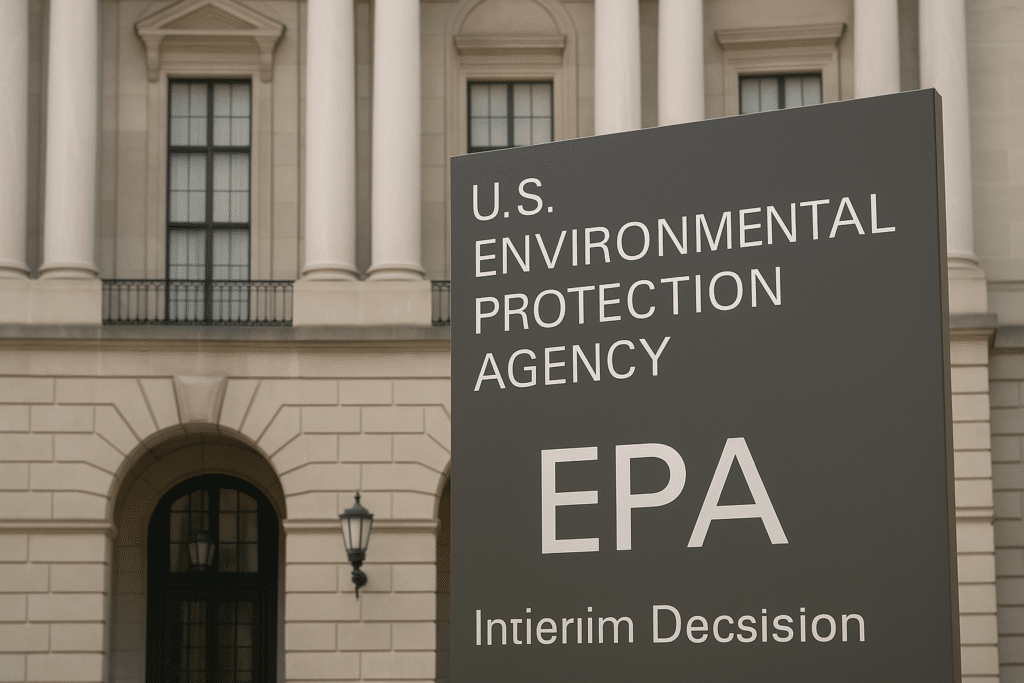
So, is sodium bromide banned?
No, it’s still being distributed and sold in some pool stores. But here’s the catch: if you’re a pool service pro, using it in outdoor pools, or pools with salt systems, ozone, UV, or MPS could violate that label—and therefore, federal law.
In practice, that means sodium bromide is essentially banned for most everyday applications until we get more clarity.
It’s kind of like fireworks in Florida:
Not illegal to sell. Very illegal to use.
Okay but… why? And is it justified? Let’s find out.
Why Do We Need Rules?
The EPA’s concern is that sodium bromide can turn into bromate when exposed to sunlight or these types of sanitization systems. And bromate is the real problem in our story.
What’s Bromate & Why is it a Problem?
For our science pros out there: Bromate (chemical formula BrO3-) is a compound that can form when sodium bromide reacts with certain conditions, like sunlight or strong sanitizers (salt system, ozone, UV, MVP). In pools, this happens when bromide ions (from sodium bromide) are oxidized, meaning they lose electrons and change chemically. For example, sunlight or systems like ozone can trigger this reaction, turning bromide into bromate
Bromate can be harmful. Scientists already referred to it as a “probable human carcinogen.” A carcinogen is something that can lead to cancer. The word to zero in on here is “probable” – meaning there’s enough evidence to be careful, but more research is needed.
Studies on mice have shown that high levels of bromate in drinking water can cause renal cancer, also called kidney cancer. One study found that bromate caused oxidative stress in mice, leading to cell damage that could form tumors [Kurosawa et al., 2001]. However, it’s unclear how much bromate humans would need to be exposed to, or how, to face similar risks. The EPA already sets a strict limit of 10 parts per billion, which is like 10 drops in a giant swimming pool—to keep drinking water safe.
While pools are not drinking water, the US EPA doesn’t want bromate in pool water because people swim in it, splash it around, and can swallow it just the same, especially for children. The EPA is worried that using sodium bromide in outdoor pools, especially ones that use salt, ozone, UV, or MPS might make enough bromate to cause problems, so they made these new rules as a precaution while more research is conducted. According to Pool Magazine, United Chemical, a well known manufacturer of sodium bromide products specifically for the pool industry, have begun studies for the EPA on this topic.
“While there’s indirect evidence to suggest that bromate is unlikely to form in swimming pools, it was important to test that hypothesis – both to provide the agency and industry with data it lacked, as well as for our own peace of mind,” says Scott Hamilton, CEO of United Chemical and son of founder Jock Hamilton. “My father introduced sodium bromide to the industry through Yellow Treat in the early 1980s. Although we feel confident based on existing evidence that bromate doesn’t form from sodium bromide under typical use in outdoor pools, we felt it was our responsibility to invest in performing the study.”
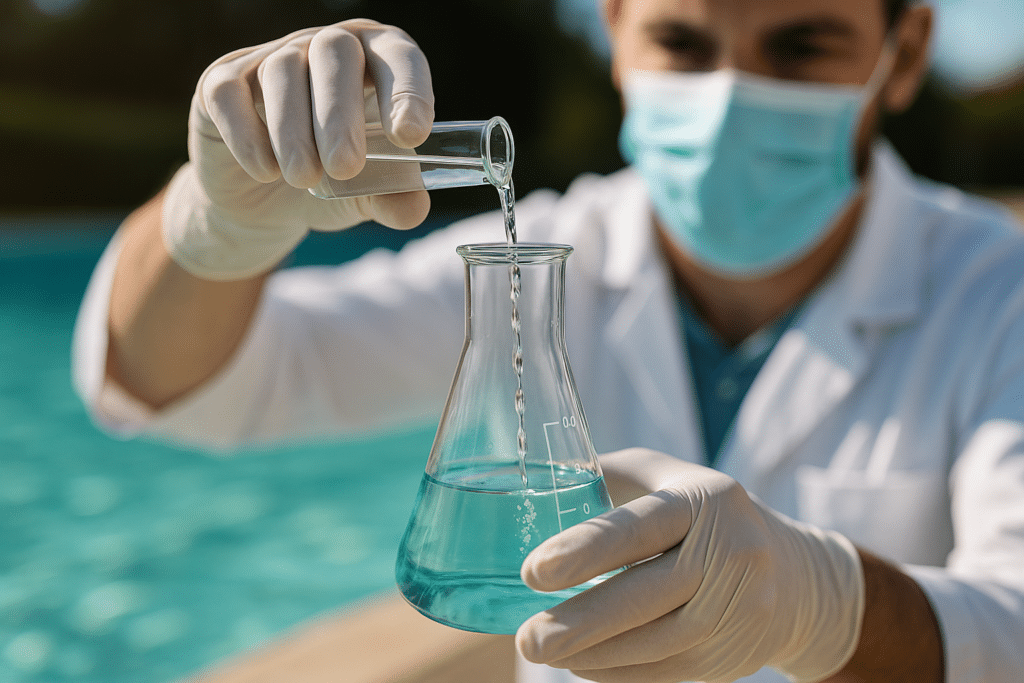
So what do we know so far?
If bromate builds up in water and people drink it or swim in it a lot, there’s a worry it could hurt the kidneys over time. Again, scientists aren’t 100% sure this happens with pools, but the EPA doesn’t want to take chances. Research is being conducted now to see what needs to be done next.
Why This Matters for Pool Professionals and Owners
The EPA’s restrictions are a big deal, especially in Florida, where pool maintenance faces unique challenges:
- Salt Pools Are Common: By 2007, approximately 75% of new pool installations in the United States were equipped with saltwater systems, according to P.K. Data Inc. The EPA bans sodium bromide in these pools. That’s a problem when yellow algae strikes, and your go-to fix is suddenly off the table.
- Yellow Algae or Mustard Algae Is Persistent: Warm, sunny climates like Florida, are ideal for yellow algae, which resists regular chlorine. Pool professionals need effective, legal alternatives without putting people at risk.
- Customer Safety and Trust: Even if bromate risks are low, the word “carcinogen” or “cancer” is going to scare customers. Using sodium bromide could damage trust or lead to legal issues if things go wrong down the road.
- Education Gap: Sodium Bromide products are still being offered but with little information being provided about the recent changes or true concerns behind them. This lacks the detail pool professionals need to educate customers and comply with the law.
- Reputation and Liability: If you recommend or use sodium bromide in an outdoor pool—or with a salt, UV, ozone, or MPS system— violates federal law, which could lead to fines or liability for pool professionals.
Alternatives to Sodium Bromide
To comply with EPA rules and maintain pool quality, professionals can turn to alternatives like E-Z POOL® from API Water. E-Z POOL® is a non-chlorine product with a copper sulfate algaecide, designed to fight yellow algae and other issues without the risk of bromate formation. Here’s how it works for the chemical experts out there:
- Algae Control: contains a long-lasting, triple-chelated copper algaecide that kills yellow, black, and other algae types, matching sodium bromide’s effectiveness. Sodium Bromide is an incredibly effective treatment per outbreak but the stronger algaecide in E-Z POOL® will also prevent future growth.
- Multi-Function: It acts as a clarifier, scale inhibitor, and water conditioner, reducing the need for other chemicals as well.
- Compatibility: Safe for all pool types, including salt, UV, ozone, and MPS systems, making it ideal for Florida’s diverse pools.
- Ease of Use: Applied weekly (1 lb. per 10,000 gallons, or a half dose for all alternative systems and salt pools), it simplifies maintenance and stabilizes water chemistry.
- No Cyanuric Acid (CYA): Unlike some chlorine products, it doesn’t add CYA, which can build up and reduce chlorine’s effectiveness in sunny climates.
For yellow or mustard algae, simply double your traditional dose. Two scoops instead of one for either salt or non-salt pools and your water will be clear, stable, and under control in no time. No guesswork. No comebacks.
IMPORTANT: Keep in mind that you need to treat all of your equipment and tools as well. Mustard algae can survive dry outside of the pool. This means that it can be easily transferred between bodies of water. You’ll want to make sure to use the pole, nets, brushes, etc in the water after applying the E-Z POOL treatment.
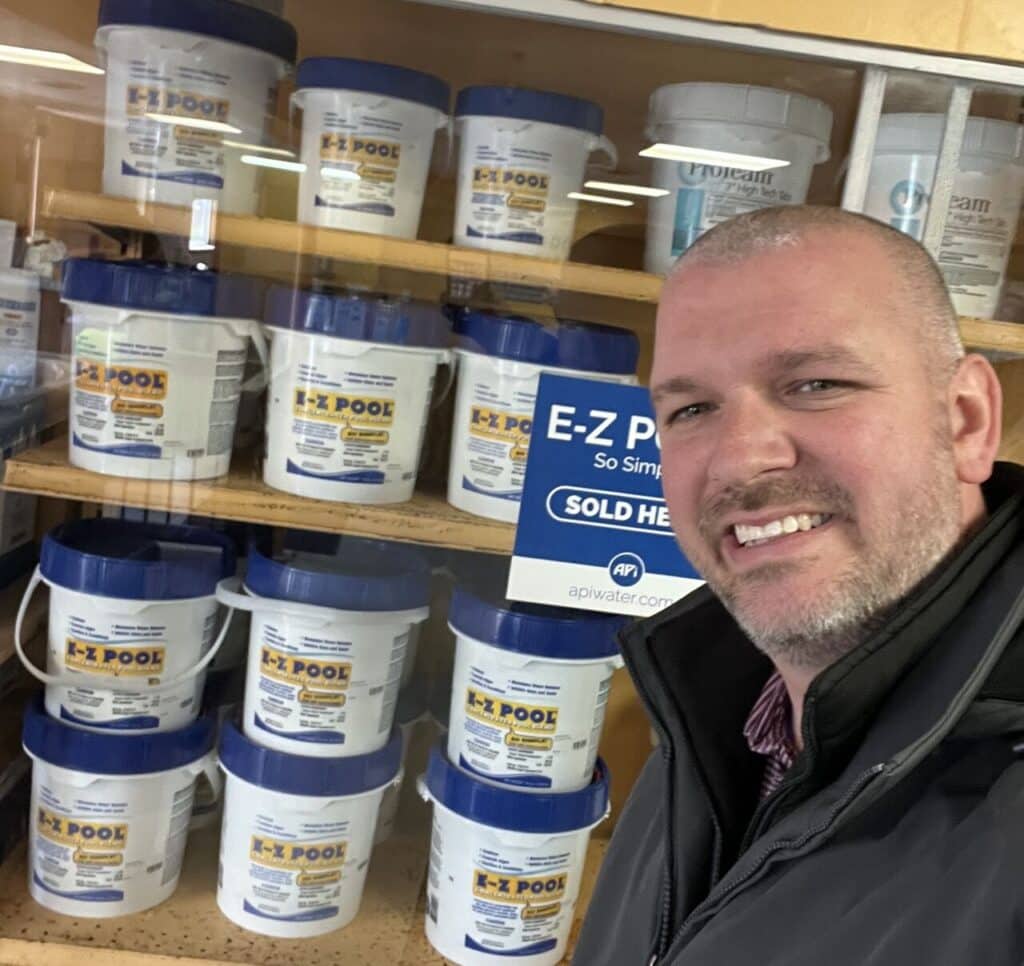
Other API Water products can complement E-Z POOL®:
- REVIVE!®: Removes phosphates (algae food), metals, and debris, preventing stains and cloudy water. Use 1 qt. per 24,000 gallons for tough cleanups.
- Pepper®: Designed for salt pools, it prevents scale on salt cells and stabilizes pH. Use ¼ lb. per 10,000 gallons weekly.
- OXYSplash®: A strong non-chlorine shock that tackles pink slime, white water, mold and organic contaminants. Use 8 oz. per 10,000 gallons weekly.
These products allow pool professionals to replace sodium bromide entirely, ensuring compliance and safety. If you’re a pool industry professional, you can find and contact your local rep here for more information. If you’re a pool owner, contact your local pool store and ask for E-Z POOL®.
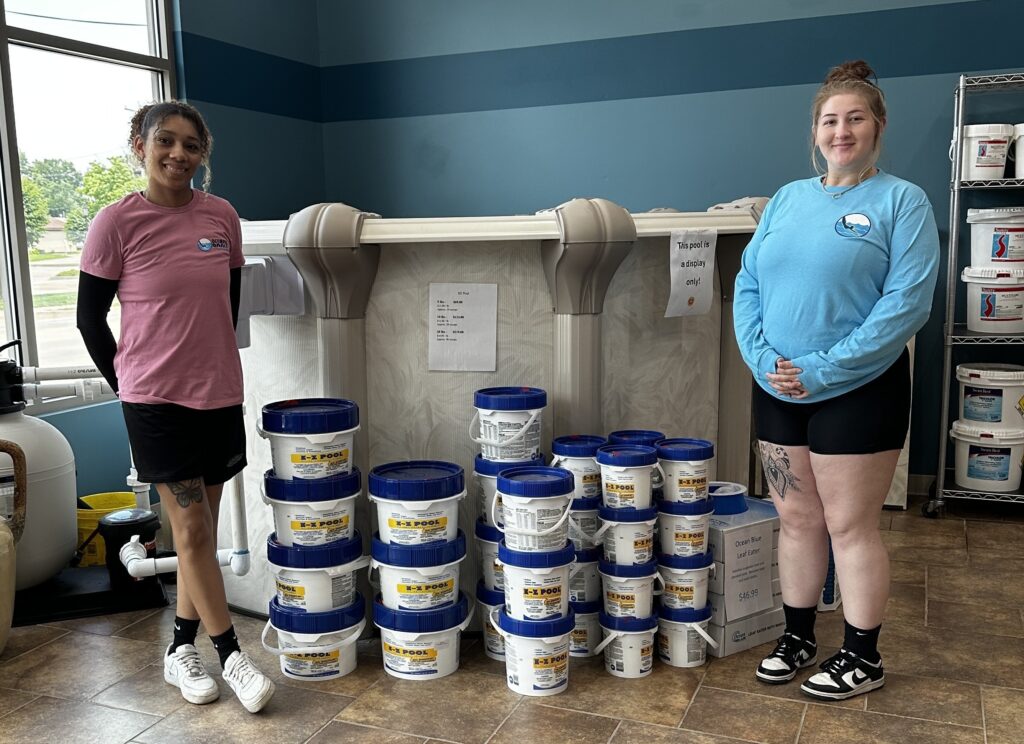
Practical Steps for Pool Professionals
To navigate these changes:
- Check Labels: Always read product labels to ensure compliance with EPA rules.
- Educate Customers: Explain why sodium bromide is restricted and suggest safe alternatives like E-Z POOL®.
- Test Water Regularly: Monitor water chemistry to prevent algae and maintain balance.
- Stay Informed: Follow updates from the EPA or industry sources like AQUA Magazine for the latest on pool chemicals.
Conclusion
The EPA’s restrictions on sodium bromide reflect a cautious approach to protect swimmers from potential bromate risks, though studies suggest that in typical pool conditions, bromate formation is low. For pool professionals, especially in Florida, these rules require a shift to alternatives that are safe and effective. Products like E-Z POOL® offer a reliable way to fight algae and maintain clear water without breaking the law or worrying customers. By staying informed and choosing compliant solutions, pool professionals can keep pools safe, clean, and enjoyable for everyone.
